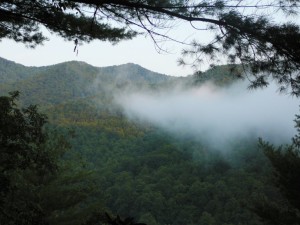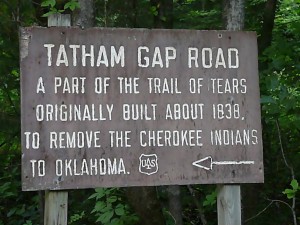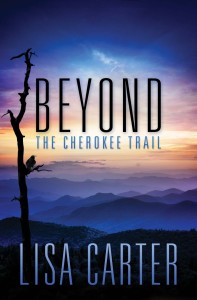 Relevant History welcomes Lisa Carter, bestselling author of seven romantic suspense novels, four historical novellas, and a contemporary Coast Guard series. Lisa enjoys traveling to romantic locales and researching her next exotic adventure. Beyond the Cherokee Trail is a 4 1/2 star Romantic Times Top Pick. The Stronghold is a 2017 Daphne du Maurier finalist. Under a Turquoise Sky, won the 2015 Carol Award for Romantic Suspense. Her latest contemporary romance, The Bachelor’s Unexpected Family, releases in September 2017. A native North Carolinian, Lisa has strong opinions on barbecue and ACC basketball. For more information about her and her books, visit her web site, and follow her on Facebook and Pinterest.
Relevant History welcomes Lisa Carter, bestselling author of seven romantic suspense novels, four historical novellas, and a contemporary Coast Guard series. Lisa enjoys traveling to romantic locales and researching her next exotic adventure. Beyond the Cherokee Trail is a 4 1/2 star Romantic Times Top Pick. The Stronghold is a 2017 Daphne du Maurier finalist. Under a Turquoise Sky, won the 2015 Carol Award for Romantic Suspense. Her latest contemporary romance, The Bachelor’s Unexpected Family, releases in September 2017. A native North Carolinian, Lisa has strong opinions on barbecue and ACC basketball. For more information about her and her books, visit her web site, and follow her on Facebook and Pinterest.
*****
Historical basis behind the book
In 1835, a minority faction in the Cherokee Nation brokered a treaty with the United States government, agreeing to the removal of all Cherokee citizens to beyond the Mississippi in Indian Territory. This deal—without the official authorization of the Cherokee National Council—became the legal basis for the enforced removal of an entire ethnic group.
When gold was discovered within its borders, the fate of the Cherokee Nation was sealed. But Chief John Ross promised an eleventh-hour intervention. And so in May 1838, most of the Cherokee were caught completely unaware. With crops planted in the field, washing hung on the line, breakfast on the table . . . soldiers appeared at their doors.
On a virtual death march—estimates range from four hundred to six thousand—men, women and children perished along the twelve-hundred mile route that became known as the Trail of Tears or Trail Where We Cried. The Trail came to symbolize the oppression of all Native Americans in the American expansion to the Pacific Ocean.
In the isolated mountain terrain of western North Carolina near the town of Cherokee, some refused to surrender to removal. These few hundred became the Eastern Band of the Cherokee.
Also eluding capture, an even smaller number hid in the rugged Snowbird Mountains—still considered one of the last wilderness regions within the United States. They became known as the Snowbird Cherokee.
Why I wrote the book
 What fascinates me most is the modern-day Indian and their juxtaposition into the larger American culture. Beyond the Cherokee Trail is a contemporary romantic suspense novel with historical elements. But why a story about Cherokee?
What fascinates me most is the modern-day Indian and their juxtaposition into the larger American culture. Beyond the Cherokee Trail is a contemporary romantic suspense novel with historical elements. But why a story about Cherokee?
My first encounter involved coming face to face with fake Cherokee Indians as a three-year-old on board the Tweetsie Railroad when I wandered too close to the staged Indian attack. Raised tomahawks leave an impression—fake or not. Thus, my fascination with the Cherokee and with the larger Native American population began. That’s it in a nutshell. Thank you very much, Tweetsie.
When my in-laws settled in Colorado near Four Corners, guess where I wanted to go? Out of that was born Beneath a Navajo Moon and Under a Turquoise Sky.
But my thoughts drifted back home eventually to North Carolina, which has the largest Native American population east of the Mississippi. I knew a lot of Lumbee as a teenager so I wrote Vines of Entanglement.
When I read about the Snowbird Cherokee and how they’d escaped the mass roundup, I realized the 180th commemoration of the Trail was on the horizon in 2018.
 One of the best things about writing is visiting the actual places where I’ve set my stories. Another great thing about writing is the people I meet along the way. Like T.J. Holland, curator of the tribally-owned Junaluska Museum. A renown Snowbird Cherokee artist, he patiently answered my many questions and helped me to locate what remains of the Tatham Gap Road where the gouged wagon ruts made on the Trail can still be seen. Deep in the woods outside Robbinsville, it is a painfully beautiful yet slightly haunted place. As if the earth itself remembers the suffering of those who once trod this path.
One of the best things about writing is visiting the actual places where I’ve set my stories. Another great thing about writing is the people I meet along the way. Like T.J. Holland, curator of the tribally-owned Junaluska Museum. A renown Snowbird Cherokee artist, he patiently answered my many questions and helped me to locate what remains of the Tatham Gap Road where the gouged wagon ruts made on the Trail can still be seen. Deep in the woods outside Robbinsville, it is a painfully beautiful yet slightly haunted place. As if the earth itself remembers the suffering of those who once trod this path.
Then T.J. mentioned the waterfall . . .
Ever since “Last of the Mohicans,” I’ve been a fan of waterfalls. I became a bit obsessed with finding the waterfall under which the Snowbird Cherokee hid and successfully eluded the army.
 Obsessed because after a four-hour hike of finding nothing, crossing knee-deep streams of rushing water, scrambling over rocky outcroppings perched precariously over river torrents, I had to be dragged off Snowbird Mountain. A mountain so remote and isolated, it doesn’t surprise me that the Cherokee evaded capture. In this age of satellites and reconnaissance planes, I feel sure most of the modern-day Cherokee Nation could hide out there again and never be found.
Obsessed because after a four-hour hike of finding nothing, crossing knee-deep streams of rushing water, scrambling over rocky outcroppings perched precariously over river torrents, I had to be dragged off Snowbird Mountain. A mountain so remote and isolated, it doesn’t surprise me that the Cherokee evaded capture. In this age of satellites and reconnaissance planes, I feel sure most of the modern-day Cherokee Nation could hide out there again and never be found.
But to quote Scarlett, “Tomorrow is another day.” I’ve been studying geographical maps, and I think I know where I took a wrong turn. I just need to ford the creek . . .turn left . . . and head up the eastern face until I either run smack into it or fall off. Anyone up for a hike?
*****
 A big thanks to Lisa Carter. She’ll give away a trade paperback copy of Beyond the Cherokee Trail to someone who contributes a comment on my blog this week. I’ll choose the winner from among those who comment by Friday at 6 p.m. ET. Delivery is available in the U.S. only.
A big thanks to Lisa Carter. She’ll give away a trade paperback copy of Beyond the Cherokee Trail to someone who contributes a comment on my blog this week. I’ll choose the winner from among those who comment by Friday at 6 p.m. ET. Delivery is available in the U.S. only.
**********
Did you like what you read? Learn about downloads, discounts, and special offers from Relevant History authors and Suzanne Adair. Subscribe to Suzanne’s free newsletter.
